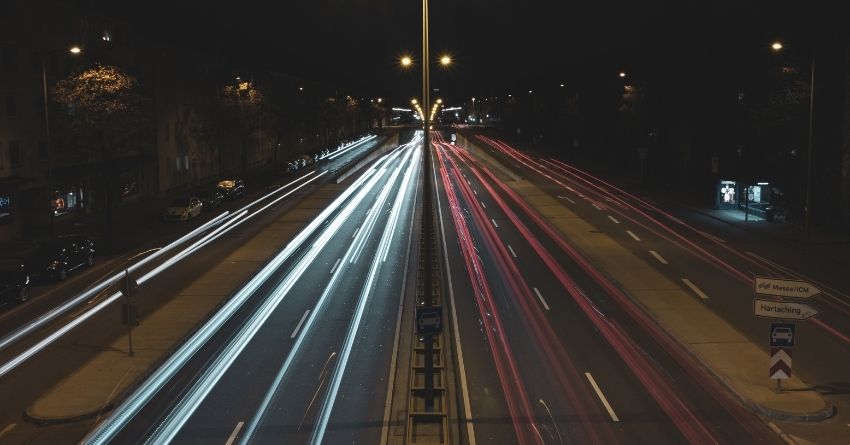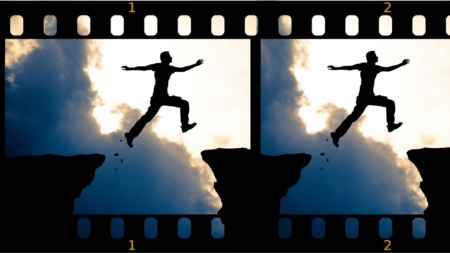Gamers LOVE buying incredibly expensive GPU’s to get their games up to 90+ frames per second. So should virtual reality videographers be have the same goal of ever increasing frame rates?
The answer is mostly yes. Motion blur can feel a lot more jarring in a VR headset than it does on a TV. So scenes with a lot of motion may benefit from increasing the frame rate to 60 frames per second. But, for scenes without much motion you can likely get away with 24 frames per second just fine.
Are More Frames Per Second Always Better for VR Video?
So for those of you completely unfamiliar with choosing frame rates for video check out this amazing video by Potato Jet.
What he says in there is correct for normal video. 24fps is fine and will appear as fluid motion. There is nothing about virtual reality video that changes that fact.
The difference is that in VR artifacts from motion can make people feel motion sick at lower frame rates. You could probably get away with filming a sit-down interview at 24fps in VR. But you’ll want more frames per second for sports, drone footage, or African Safaris.
Motion is why gamers are OBSESSED with frames per second.
Video games have more motion in them than just about any other medium. When you’re getting shot at while flying through space more frames per second is an inarguably better experience. That said, VR video is unlikely to have anywhere near that amount of action or interactivity in it. So you can probably get away with as low as 24 fps just fine.
The Maximum Frame Rate is 60 FPS (For Now)
Pretend that you think more frames per second is always better (despite what I just told you).
That’s too bad. Because in 2022 it’s really impossible to film and distribute good VR content at anything above 60fps for the following reasons.
- There are no 8k cameras I know of that shoot 180° videos above 60fps.
- The Quest 2 (90% market share) has a 90 frames per second maximum. Most alternative headsets also have this limit (or lower).
- Popular distribution platforms like YouTube VR and Oculus TV max out at 60 frames per second.
- 8k 60fps video takes up a lot of space and is extremely difficult to edit. 120fps+ doubles space and editing requirements.
Maybe in 5 years we can debate if 120fps is better than 60fps (or if you’ll experience diminishing returns). But in 2022, it’s effectively impossible to watch a 120fps VR video anyway. So you really don’t need to worry about it.
That said, unless you’re working with a lot of motion in your video you can probably get away with 24 fps.
What’s the Best Shutter Speed for VR Video?
In case you’re not caught up on what shutter speed is this video is a pretty excellent explainer.
The gist is that the shutter speed is effectively how long light is hitting your sensor when snapping a photo. For regular video you’d typically just follow the 180° rule and set your shutter speed to be double your frame rate. Meaning 1/48 for 24fps video, 1/60 for 30fps video, 1/120 for 60fps video, etc.
Letting more light hit your sensor longer (by slowing down your shutter speed from 1/48 to 1/10 for 24fps video for instance) will let you get cool motion blur shots like the picture of the highway below.

That amount of motion blur would sometimes be cool for photos. But, it’d be a disaster for VR video. For VR video we’re only really debating if it makes sense to increase your shutter speed to reduce motion blur.
And the answer is maybe, but to a point.
So when you speed up your shutter speed there’s less light hitting your camera’s sensor per frame. Meaning you can’t just infinitely increase the shutter speed without running out of light. If you’re already filming in a dark room increasing your shutter speed might make your video much darker and bad experience.
And faster shutter speeds don’t infinitely make motion look more natural either. Motion blur exists in real life and removing it can also feel jarring.
Your camera also has limitations. For instance, the fastest possible shutter speed on Insta 360 cameras is 1/8000s. And lots of videographers and photographers have complained for ages about weird artifacts if they really go nuts on shutter speed. That will vary by manufacturer, but it likely exists for your camera.
I’d start with the 180° rule. Meaning I’d set my shutter speed to 1/120 for 60fps video. And then I’d consider experimenting with 1/240, 1/480, etc. to see if I liked the feel of the videos better assuming I was filming in a bright enough location and there was a lot of motion in the video. Otherwise I’d leave it as is.
What About Resolution?
I have an entire post about the optimal resolution for VR video (because it gets complicated).
The gist is if you can film a 180° video at 4k per eye (meaning you’d need an 8k camera) then you probably should for best results.


